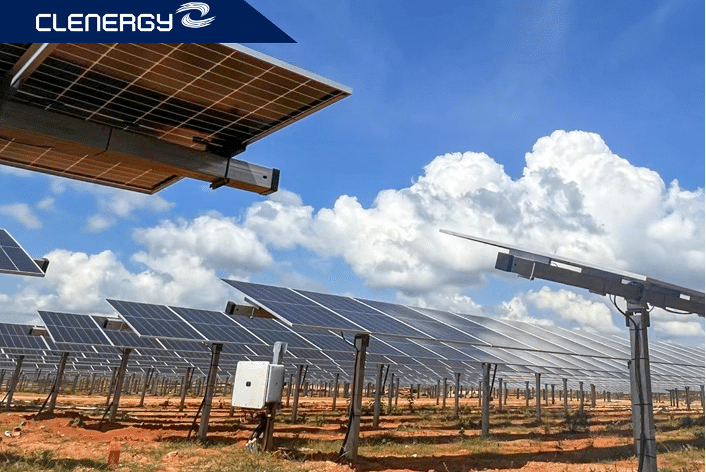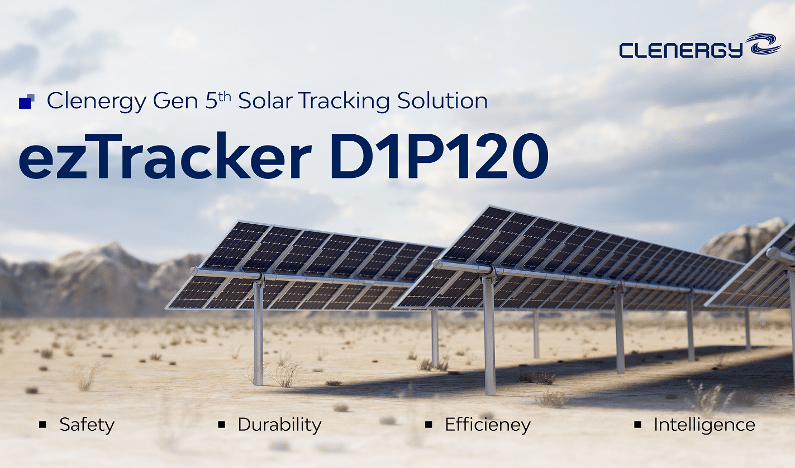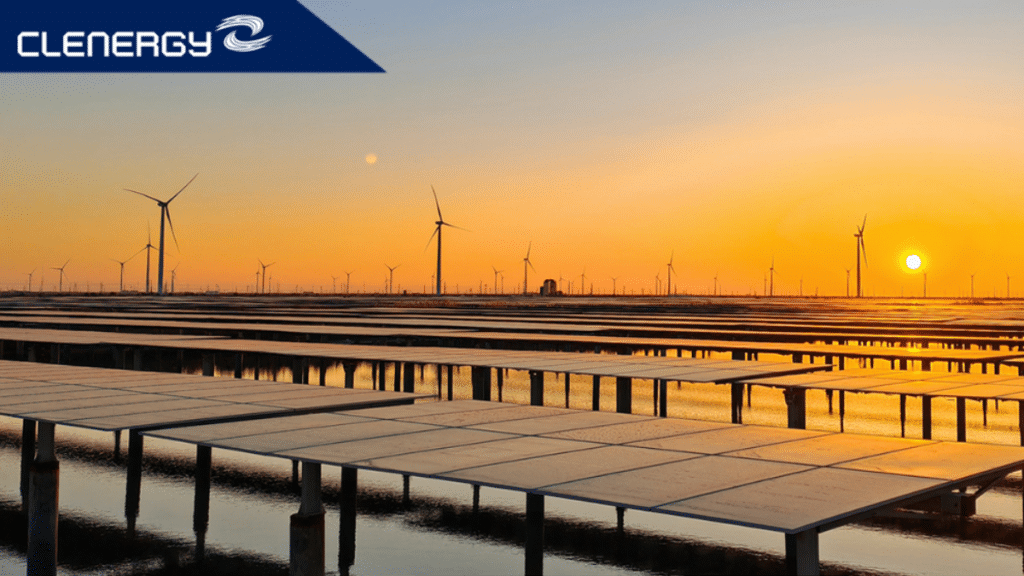As the global deployment of solar photovoltaic (PV) systems continues to accelerate, both fixed-tilt mounting systems and smart solar trackers play important roles in the market. Fixed-tilt mounting systems, which are set at a static angle, offer simplicity, cost-effectiveness, and reliability. However, they can only capture sunlight optimally for a limited part of the day.
In contrast, smart solar trackers can dynamically track the sun’s path, increasing energy production and providing higher energy yields. So that they are particularly valuable for utility-scale solar farms and large commercial projects, where even minor efficiency gains can translate into substantial raises in revenue.
What is a Solar Tracker?
The solar tracker is a mechanical system that adjusts the orientation of solar panels, reflectors, or other solar energy-harvesting components. Its primary goal is to ensure that the solar panels gather the maximum possible amount of direct sunlight at any given time, thereby optimising the conversion of sunlight into electricity.
Core Components of Smart Solar Tracker System
- PV Array: As the core of the entire system, the PV array is composed of multiple solar panels that efficiently transform solar energy into electricity through series or parallel connections.
- Tracking Mount Structure: Made from galvanised steel or aluminium alloy, its main purpose is to support the PV modules and withstand environmental stresses such as wind loads, snow loads, and seismic forces.
- Drive Mechanism: This key component is responsible for rotating or tilting the solar panels to follow the sun’s path. Depending on the type and size of the tracking system, it can be powered by electricity, hydraulics, or pneumatics. Common drive mechanisms include motors, gears, and actuators.
- Control System: It utilises technologies like sunlight sensors or GPS to precisely determine the sun’s position and, combined with a preset algorithm, calculates the optimal tilt and rotational angles in real time to maximise energy generation.
Types of Smart Solar Tracker Systems
(1) Single-axis Solar Tracker
Single-axis tracking rotates solar panels around a single axis. The most common type is the horizontal single-axis tracker, which rotates the panels from east to west to synchronise with the sun’s motion. Due to its relatively simple mechanical structure and lower cost, single-axis trackers are widely used in large utility-scale solar farms.
(2) Dual-Axis Tracking System
Dual-axis solar trackers can rotate around two axes, typically the north-south axis (vertical direction) and the east-west axis (horizontal direction). This design allows them to precisely track the sun’s position at any point in the sky, considering both the daily movement and seasonal changes in the sun’s altitude angle.
Is a Smart Solar Tracker Worth It?
1. Increase Average Annual Energy Yield
One of the most compelling reasons to invest in a smart solar tracker is its ability to significantly boost the average annual energy yield of a solar PV installation. Through continuous sun-tracking alignment, trackers maximise sunlight absorption, especially during low-light conditions like early mornings, late afternoons, or winter seasons. For instance, Clenergy ezTracker D1P single-axis system demonstrates 20% higher output with standard modules, while pairing with bifacial double-glass modules can deliver 25-30% generation gains.

2. Shorten Payback Periods
Although solar power tracker systems require higher initial investment costs, the improved power generation revenue can shorten the payback period. This benefit is especially notable in regions with high electricity prices or subsidy policies. Furthermore, the higher power generation output of the tracking system over its lifecycle can effectively decrease the Levelized Cost of Electricity (LCOE), thereby substantially enhancing the project’s overall economic viability.
3. Optimal Performance in High-Irradiation Regions
Smart solar trackers deliver peak efficiency in areas with abundant sunlight and clear skies, such as deserts, tropical zones, or sunny coastal regions. In these locations, trackers fully exploit the available solar resource, outperforming fixed-tilt systems.
How to Choose the Smart Solar Tracker Systems
1. Topography and Soil Conditions
The project’s terrain and soil stability can impact the installation of foundations and mounting structures. Sloped or uneven ground may require a more complex and costly solution.
2. Project Size and Budget
The budget should include not only equipment procurement costs but also installation, operations and maintenance, and possible land reclamation expenses. A comprehensive assessment ensures the project’s economic viability. For large, utility-scale projects, single-axis trackers are generally more cost-effective, balancing energy gains and system costs.
3. Solar Irradiation Characteristics and Climate Adaptability
The local solar trajectory and weather conditions are crucial factors in selecting the appropriate tracking system. In higher-latitude regions, where the solar altitude angle varies significantly, dual-axis tracking systems can maximise energy capture, while single-axis systems are preferable in cloudy/diffuse-light conditions due to better cost efficiency.
4. System Durability and Long-Term O&M Requirements
Smart solar trackers are usually exposed to various weather conditions, including snow, strong winds, heavy rain, and extreme temperatures, so they must be designed with robust components and reliable construction to withstand these elements.
Smart Solar Tracker from Clenergy
As one of the reliable and professional solar tracker manufacturers, Clenergy develops a range of smart solar trackers to meet the diverse needs of various projects:
- Clenergy ezTracker D1P is designed for utility-scale PV projects. It features a portrait module layout and can be installed on terrain with slopes up to 20%, enabling deployment in diverse and uneven landscapes.
- Their ezTracker D1P120 (multi-point drive) maintains excellent aeroelastic stability in extreme weather without the need for dampers. Compatible with both monofacial and bifacial PV modules up to 600W, it integrates an advanced AI control and energy gain platform. This tracker is well-suited for sites with poor soil conditions, high wind loads, or complex terrain.

- The Clenergy ezTracker D2P120 delivers high power generation efficiency and superior load-bearing capacity. Its outstanding performance in structural strength, wind and snow resistance, and system stability guarantees it is highly effective for power plant projects in extreme environments or high-load areas.
Conclusion
Solar power tracker systems have proven to be a powerful tool for elevating the efficiency and profitability of solar PV projects. If you are looking to raise the economic viability of your solar initiative, investing in a smart solar tracker is a decision worth considering.
Clenergy’s products demonstrate high performance even in challenging environments, meeting diverse project needs. Contact them today to learn more about how their solutions can benefit your specific project.
